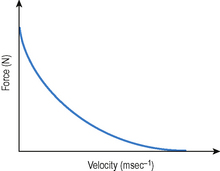CHAPTER SIX Exercise to Improve Power
This chapter defines muscle power and the factors which determine this. It explains how to assess power output and the principles of exercise prescription for improving power.
DEFINITION
Power is the rate of doing work and may be referred to as anaerobic power or muscle power. The concept of power is important as it relates to exercise. When exercising the work rate or power output describes the intensity of the exercise, that is how quickly an individual can complete an exercise. Two individuals may both be able to carry out a similar amount of work but a highly trained individual will be able to carry out the work in a shorter time and so have a higher power output than the individual who is less highly trained. Power may need to be considered most commonly for athletes competing in events such as sprinting and jumping. However it may be just as important for ordinary functional activities. An example of this is that of somebody being able to cross a road at a fast enough pace whilst the green light is showing at a pedestrian crossing. For many older people or those with other mobility problems this can be extremely difficult.
FACTORS DETERMINING ANAEROBIC OR MUSCLE POWER
Velocity of shortening
It is possible for a muscle to generate most force when it contracts slowly. As the speed of contraction becomes faster, force generated by the muscle becomes less until a point is reached, the maximum velocity of shortening, where no force is generated. This is illustrated in Figure 6.1. Speed of shortening largely depends on the different types of muscle fibre, I, IIa and IIb, within a muscle and this is genetically programmed. There is no real evidence to suggest that speed of shortening can be improved with training.
Muscle strength
Muscle strength is an important contributing factor to muscle power as a basis for power development. Factors determining muscle strength have been considered in detail in Chapter 4. Traditional resistance training programmes have been found to increase muscle strength and therefore power at slow movement velocities. More recent research has shown that strength training with light to moderate loads (30–60% of 1 RM) at high velocities may produce larger increases in maximal power by increasing fast force production.
Task specificity
If a person is skilled at doing a task, they will be able to complete the task quickly and efficiently. Development of maximal power for a task is the combination of muscle strength required for the task and the skill and ability of the person to coordinate the movement pattern required to carry out the task. There are many factors which contribute to a person’s ability to perform a task. However practice of the specific task for which power is required will improve the neural mechanisms used for muscles to work together to achieve the task.
Stay updated, free articles. Join our Telegram channel

Full access? Get Clinical Tree









